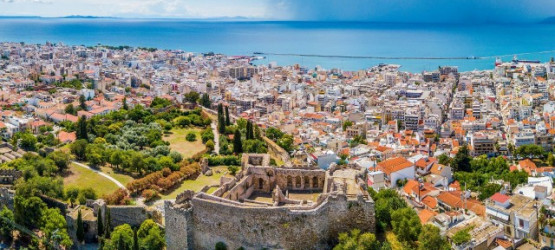Patras is Greece's third-largest city and the regional capital of Western Greece, in the northern Peloponnese. The city is built at the foothills of Mount Panachaikon, overlooking the Gulf of Patras. The city's core settlement has a history spanning four millennia; in the Roman period it had become a cosmopolitan center of the eastern Mediterranean whilst, according to the Christian tradition, it was also the place of Saint Andrew's martyrdom. Dubbed as Greece's Gate to the West, Patras is a commercial hub, while its busy port is a nodal point for trade and communication with Italy and the rest of Western Europe.
The city has two public universities and one Technological Institute, hosting a large student population and rendering Patras an important scientific center with a field of excellence in technological education. The Rio-Antirio bridge connects Patras' easternmost suburb of Rio to the town of Antirrio, connecting the Peloponnese peninsula with mainland Greece. Every February, the city hosts one of Europe's largest carnivals, in what is considered the equivalent of Halloween. Patras is also famous for supporting an indigenous cultural scene active mainly in the performing arts and modern urban literature. The city is also home to numerous sites such as the Roman Odeon and Amphitheater, the medieval Patras Castle, the church of Saint Andrew, the municipal Theatre of Apollon and the Achaia Clauss wine industry and tasting center.
A year round destination, Patras can be accessed either by port (especially from destinations west of Greece) or by car/bus as it is only a 2 hour drive from Athens.









